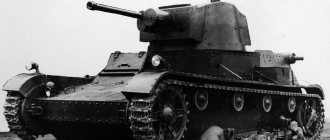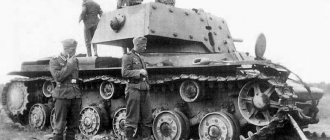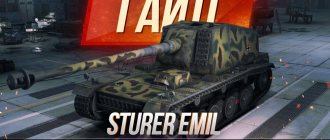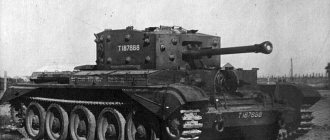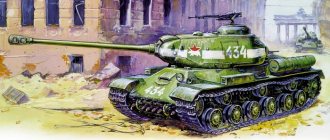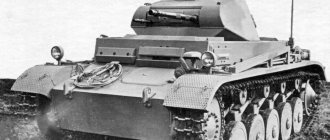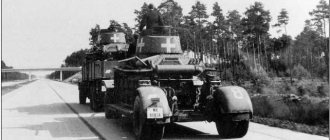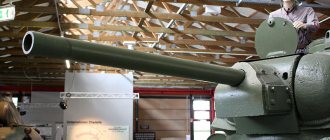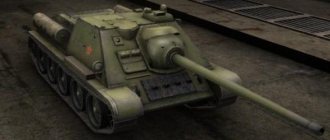Home » Real story » History of Wars » Yuri Pasholok. M3 Lee. American left hand thread
History of WarBooks on the history of tanks
boroda 04/10/2019 1447
15
in Favoritesin Favoritesfrom Favorites 8
By the beginning of World War II, the American army had only a few medium tanks. This does not mean that the designers there did not work on vehicles of this type: in the summer of 1939, the Medium Tank M2 . Produced in an edition of only 18 copies, it turned out to be a landmark vehicle for American tank building. The general concept of its chassis became the basic concept for American medium tanks. In 1940, a more advanced Medium Tank M2A1 appeared, which, however, could already be considered obsolete by the time it was launched into production. Taking it as a basis, the designers created the Medium Tank M3, the first truly mass-produced American medium tank. It and its modifications lasted only a year and a half on the assembly line, but thanks to its unusual design, this vehicle turned out to be a significant milestone for the world tank building. There are diametrically opposed opinions about this tank, so we will try to approach it as impartially as possible.
Within tight time frames
The starting point in the history of the Medium Tank M3 should be considered June 13, 1940. On this day, the American Armaments Committee developed a specification for a medium tank with a 75 mm gun as the main armament. This specification emerged as a result of a thorough study of the results of military operations in France. It turned out that the Medium Tank M2A1 no longer fully corresponds to the realities of modern warfare.
The American military, oddly enough, considered the 75-mm KwK L/24 tank gun, which was installed on the Pz.Kpfw.IV medium tank, to be the most optimal tank weapon. Yes, the armor penetration characteristics of this gun did not look the best, but in general it was the Pz.Kpfw.IV that evoked the most positive emotions among the personnel of the German units who had to interact with tanks. It is not surprising that the US military considered the 75 mm gun more promising than the 37 mm gun.
An improved version of the full-size Medium Tank M3 mockup. The vehicle has already lost its turret with a pair of machine guns
At the time the specification was developed, there was no American equivalent of the 7.5 cm KwK L/24. However, a suitable weapon was found quite quickly. In 1937, a specification for a 75 mm light anti-aircraft gun was developed. This gun was supposed to be used where the 76-mm anti-aircraft gun was too heavy. It was based on the 75 mm M1897 field gun of French origin. The barrel length was reduced to 31 caliber, the piston bolt was replaced with a wedge one. This is how the 75-mm T6 anti-aircraft gun was born.
The results of its tests were far from the best, so the anti-aircraft gun remained experimental. But in the summer of 1940 it was again in demand, this time by tank designers. As a result, the 75-mm T7 tank gun was created based on the anti-aircraft gun. Its characteristics turned out to be significantly better than those of the German 7.5 cm KwK L/24. The closest analogue of the American gun was the Soviet L-11 tank gun.
The final version of the layout, approved by the beginning of 1941
The main problem that American engineers faced was the placement of a 75 mm gun in the tank. It did not fit in the existing T7 turret, and the possibilities for converting the tank were minimal. This was due to the fact that the American army needed medium tanks like air, and unnecessary delay threatened to disrupt supplies.
It was then that the designers remembered the Medium Tank T5E2, which was tested in the spring of 1939. Installing the gun in the hull significantly simplified the task and reduced the processing of the base vehicle to a minimum. True, the Medium Tank T5E2 weapon option could not be called successful. A redesign of the installation was required. Nevertheless, the general concept of the new tank seemed so convincing to the American military that on July 11, 1940, the not yet built vehicle was accepted into service as the Medium Tank M3.
The first prototype of the Medium Tank M3 built by Rock Island Arsenal. Aberdeen Proving Ground, late March 1941. It is clearly noticeable that there is no viewing device on the left side of the commander's cupola
The first prototype of the tank was presented on August 26, 1940 at the Aberdeen Proving Ground. It must be said that the layout was noticeably different from the well-known Medium Tank M3. The base of the Medium Tank M2A1 has remained virtually unchanged; the concept of machine gun armament with turrets along the perimeter of the fighting compartment has also been preserved. A casemate installation of a 75 mm T7 cannon appeared in the right front corner of the fighting compartment. Its firing sectors, of course, were limited, but compared to the installation of the Medium Tank T5E2, there was clear progress.
Much more interesting is that the number of machine guns in the hull has not decreased. A twin Browning M1919 mount was placed in a small turret in the left front part of the fighting compartment. The gun turret was also preserved, and a small turret with an anti-aircraft machine gun appeared on its roof. The thickness of the frontal sheet of the hull increased to 50 mm, and the sides - to 38 mm.
The same tank during a demonstration to the leadership of the Armaments Department
The reaction of the American military to the presented model was ambiguous. The fact that they managed to install a 75 mm cannon in a medium tank clearly pleased them, but the limited field of fire upset them. From the very beginning they had the desire to put a 75 mm cannon in a turret with all-round fire, but such a turret simply did not exist. On August 31, the Armaments Committee launched design work on a tank with a rotating turret and a 75 mm cannon. However, in the opinion of the Armaments Committee, the new tank was in any case better than the M2A1, so it was quite suitable as a temporary measure. It was proposed to produce a series of 360 such tanks, during the production of which it would be possible to complete a medium tank with a rotating turret and a 75-mm cannon and put it on the conveyor belt.
Management personally examines the firstborn
Based on the results of examining the Medium Tank M3 mockup, a large list of alterations was compiled. It was decided to abandon the machine-gun sponsons and turret, limiting ourselves to the twin installation of forward-facing machine guns. The radio operator moved to the place of the turret in the left front part of the fighting compartment. Also, a lot of changes were made to the structure of the fighting compartment. This is how the second version of the full-size Medium Tank M3 mockup appeared. It reflected all the proposed changes to the armament and fighting compartment, but the layout itself was still based on the M2A1 chassis. Later, the final version of the layout appeared, which received a new transmission. Instead of a 5-speed manual transmission, a 5-speed synchronized gearbox was installed. An equally important point was that the transmission elements were assembled into a single unit, bolted to the frontal part of the hull. The block itself consisted of three parts, which were also connected to each other with bolts. This design, developed by Harry Knox, made maintenance much easier.
The design of the tower turned out to be extremely unusual. Formally, it was a three-seater, but the crew was in the “glass” underneath it. The tower became habitable only if the commander fired from a machine gun in the commander's cupola or sat in this cupola in a marching manner. Many parts (turret and commander's cupola, gun mount, pistol ports, transmission housing) were cast.
Longitudinal section of the tank. It's clearly noticeable that it's not that spacious inside.
On August 28, 1940, an agreement was signed with Chrysler Corporation to produce 1,000 Medium Tank M3s. At the same time, the order for the production of 1000 Medium Tank M2A1 was canceled. The tanks were to be built at the Detroit Arsenal, which Chrysler began building on September 9, 1940.
The British became very interested in American capacities for the production of medium tanks. Initially, there was talk of releasing British Matilda infantry tanks, but it quickly became clear that the Americans would not agree to such a thing. Then the idea arose to take the design of the Medium Tank M3 as a basis and create a tank according to English specifications. This is how the General Grant tank, or Grant I, was born. A separate material will be devoted to the English modifications of the Medium Tank M3 and their use in the armies of the Commonwealth. Here it is only worth saying that the turrets for the American and English versions of the tank were developed in parallel.
Layout of the crew and ammunition. Only the one loading the 75 mm gun felt truly at ease in the tank.
The design documentation for the tank was largely completed by the end of December 1940. At the same time, work was carried out on the weapons and turret. The construction of the prototype was carried out by the Rock Island Arsenal. Final changes to the documentation were made in February 1941, and on March 13, the first prototype of the Medium Tank M3 made its first run. On March 21, the vehicle arrived at the Aberdeen Proving Ground, where a turret with weapons was installed on it.
In general, the prototype with registration number USA W-304191 corresponded to the final layout, with the exception that the commander's cupola was missing a viewing device on the left side. The combat weight of the vehicle was 27.9 tons, that is, one and a half times more than the Medium Tank M2A1. People often make fun of the appearance of the American medium tank, but we must face the truth: at the time of its creation, the Medium Tank M3 was one of the best medium tanks. It received projectile-resistant armor that reliably protected it from fire from the German 3.7 cm Pak anti-tank gun, while at the same time possessing quite good mobility and powerful weapons. And most importantly, he showed up on time.
Equipment for M3 Lee
So we’ve come to the issue of vehicle configuration, and given the fact that in fact we have tank destroyers in our hands, the emphasis should be on armament. Of course, additional modules will allow you to improve some parameters quite well, so the equipment for the M3 Lee tank
Let's put the following: 1. – the most popular and reasonable module, which will make our damage per minute even more dangerous. 2. – due to some problems with accuracy, this choice is quite justified, because the faster we converge, the more comfortable the shooting process will be. 3. – our review is obviously weak and this issue needs to be resolved radically, especially in view of the features of this device.
But for those for whom the viewing range and the possibility of the first shot are not so important, if you are not afraid to rely on allies, you can replace the last point with, get even more firepower and other things.
Engine and corps chaos
While the design of the Medium Tank M3 was being completed and the prototype was being built, the Armaments Department was adjusting the volume of supplies. There was no longer talk of any 360 or even 1000 tanks. By the end of 1940, the military's appetites had grown greatly: it was expected that 14.5 tanks would leave the factories every day, of which 6.5 were destined for the British. As the start of production approached, demands increased: in April 1941, they were talking about a thousand medium tanks per month, and in July it was already about two thousand. The final figure looked even more impressive: in 1942 it was expected to receive 25,000 tanks, and in 1943 - 45 thousand. But once Tukhachevsky, who proposed building 50,000 tanks, was considered a madman.
The first production Medium Tank M3 during an official demonstration. Detroit Arsenal, April 24, 1941
For obvious reasons, plans and the actual state of affairs were somewhat different. The first production Medium Tank M3 was completed at the Detroit Arsenal on April 24, 1941, after which it was ceremonially delivered to the customer. The car confidently overcame the obstacle course and broke a thick log in front of the amazed audience.
The question is that it took time to organize mass production, and the arsenal itself alone could not even build 1000 tanks per month. Officially, production of the Medium Tank M3 began in June 1941, but only by the end of summer was it possible to reach acceptable production volumes. To do this, it was necessary to connect another plant - American Locomotive Company (ALCo). To meet the needs of English customers, two more railway industry enterprises were involved in the production - Pressed Steel Car Company and Pullman-Standard Car Manufacturing Company.
Tank assembly at the Detroit Arsenal
Improvements to the tank began almost immediately after the start of its mass production. First of all, this concerned weapons. In the spring of 1941, work began on installing a stabilizer in the vertical plane on the guns. This concerned not only the 37-mm M6 gun in the turret, but also the 75-mm T7 gun, adopted for service under the designation M2. Work on the stabilizer was somewhat delayed: despite the fact that the decision to install it was made back in June 1941, they actually began to be installed in November. From the outside, tanks with weapon stabilizers could be distinguished by their counterweights. On the M6 gun, the counterweight in the form of a long pin was located under the barrel, while on the M2 it was attached near the muzzle.
The presence of counterweights on the guns is a sure sign that the tanks have weapons equipped with stabilizers
By the time the stabilizer appeared, work was underway to create a more advanced weapon. For the promising medium tank T6 (future Medium Tank M4), they created a 75-mm T8 gun, which featured a barrel length increased to 40 calibers. The introduction of a more powerful weapon roughly coincided with some changes in appearance. It turned out that the side hatches were vulnerable to flanking fire. The first M3 guns were installed in tanks that had side hatches, but they soon began to weld them shut. A little later they got rid of them altogether, leaving only pistol ports.
One of the first Medium Tank M3 to receive the 75 mm M3 gun
Subsequently, the tank received reinforced bogies, since its weight gradually grew as a result of all these improvements. At the end of production, the crew of the car was reduced from 7 to 6 people: they decided to abandon the radio operator, and his functions were partially performed by the driver. In June 1942, one of the course machine guns was removed and a blank was installed in its place. Also, a tool box began to be attached to the front plate, and the driver had a periscope device for movement in combat conditions.
These were the last Medium Tank M3s. As you can see, the designers completely abandoned side hatches
In July, production of the M3 ceased; over the entire period, four factories produced 4,924 tanks of this type. This number included Grant I. Most of the tanks of this type were produced by the Detroit Arsenal.
Medium Tank M3A1, noticeably different in hull design
In addition to the fact that the Medium Tank M3 was the first American tank to be produced by different companies, it was the first to feature a wide variety of appearance. First of all, this concerns buildings. Like other American tanks of the period, the M3 received a riveted hull. This assembly method was simpler for a number of enterprises, but it also had its disadvantages. In addition to the rather high labor intensity, the rivets themselves posed a danger to the crew. When hit by a projectile, the inner side of the rivet could break off and turn into a destructive element.
The cast upper part of the hull made it possible to more rationally use the volume of the fighting compartment, but increased the mass
In June 1941, the Armaments Committee launched a program to find other ways to assemble the hull. The first of these was casting. The upper part of the body began to be cast in one piece. The side hatches have become smaller, and the top one has moved back. The lower part of the body was left riveted. In addition to simplifying production, the cast body made it possible to use internal volumes more efficiently. True, the combat weight of the tank increased to 28.6 tons.
M3A1 late series. There are no side hatches anymore
On October 9, 1941, the M3 with a cast hull was standardized as the Medium Tank M3A1. American Locomotive Company (ALCo) was chosen as the manufacturer. Production began in February 1942. It did not last long: in total, until August 1942, ALCo built 300 tanks of this type. Unlike "regular" M3s, tanks with cast hulls were not exported. All of them ended up in the American army.
As with other tanks in the M3 family, the M3A1 was initially produced with M2 guns, later replaced by the long-barreled M3. In addition, similar design changes were made, including the elimination of side hatches and the dismantling of one of the machine guns. The M3A1 is also notable for the fact that it tested the Guiberson T-1400-2 diesel engine. This air-cooled radial engine developed a power of 350 hp. In general, the tests were disappointing, which did not prevent us from equipping 28 M3A1 tanks with such power plants.
Medium Tank M3A2, featuring a welded hull
The second alternative to riveted construction was welding. Welded joints looked more promising than casting. The shape of the hull, compared to the M3, remained unchanged, while there was no need to drill holes in the armor plates, and the strength of the welded joint was higher than that of riveted ones. Finally, the cast body had its drawbacks. With the same thickness of armor, cast armor had less resistance than rolled armor. It is not surprising that welding later became the main method of assembling American tanks.
The M3A2 series turned out to be very small - only 12 tanks
The Armaments Committee initiated the development of a new modification of the Medium Tank M3 in August 1941, and the Rock Island Arsenal was the contractor. Tests showed that the idea was correct: the strength of the connection became higher, and the total mass of the tank decreased to 27,400 kg. Even before testing began, the tank was standardized as the Medium Tank M3A2. A new company, Baldwin Locomotive Works (BLW), was selected as the manufacturer. The first M3A2 arrived at Aberdeen Proving Ground on January 1, 1942. The company gained momentum rather slowly: by March, only 12 M3A2s were delivered. At this point, the production of the modification ceased, since one serious change was made to the design of the tank.
Longitudinal section of a Medium Tank M3A5. The main difference was the new power plant and the changed rear part of the hull
One of the important design features of the Matilda infantry tank, which the American military paid attention to, was the installation of twin diesel engines. American manufacturers also had similar engines. First of all, we are talking about a two-stroke air-cooled diesel engine GM 6-71 with a volume of 6.98 liters. Since 1940, these engines have been installed on buses, better known as GM old-look.
We had to pay attention to these engines for two reasons. Firstly, the torment with Guiberson radial diesel engines clearly indicated that this area does not have any special prospects for development. Secondly, William Knudsen, head of the Office of Production Management, understood perfectly well that Continental R975 gasoline engines alone would not be enough to provide all the tanks with power plants. Thirdly, GM 6-71 were reliable and compact engines, which made it possible to make a twin installation without any problems.
The Medium Tank M3A3 differed from the M3A5 in having a welded hull
In August 1941, work was authorized to create a power plant based on the GM 6-71. The twin engine received the designation General Motors 6046. The rated power of the engine was 375 hp, and the maximum was 400. An M3 medium tank with serial number 28 was used as a test bench. As a result of the alterations, the combat weight of the tank increased to 29 tons, but Due to the more powerful motor, the maximum speed increased to 48 km/h. It is not surprising that in October 1941, based on the results of tests, the Armaments Committee approved this power plant and standardized the tank as the Medium Tank M3A5. These vehicles can be distinguished externally by a redesigned rear plate with a characteristic “pocket”, as well as by the appearance of exhaust pipes.
Late production M3A5. The gun is still short-barreled, but with a stabilizer, and the side hatches are welded shut
Baldwin Locomotive Works was also chosen as the manufacturer of the M3A5, and its production was established in parallel with the production of the M3A2. Another interesting fact is that another tank, the M3A3, was also put into service at the same time. It was an M3A5 with a welded body. The M3A5 went into production earlier, in January 1942. A total of 591 tanks of this modification were produced, of which 185 went to England. As for the M3A3, these vehicles were put into production in March 1942, and 322 of these tanks were produced by December. They also turned out to be in demand by the British: 49 cars went to them.
The characteristic rear part of the hull, which makes it easy to distinguish tanks of the M3 family with diesel engines
The appearance of the latest production modification of the Medium Tank M3 was also associated with the power plant. Its history began in June 1941, when Knudsen visited Chrysler. The reason for this visit was the difficult situation with providing tanks with engines. The pace set by the military clearly indicated that there would not be enough Continental R975 engines. A new power plant was required, aimed primarily at tanks for delivery under the Lend-Lease program. Chrysler received the task to create such an engine. The automaker did not reinvent the wheel and developed a power plant based on a passenger 6-cylinder engine. This is how the most unusual tank engine of the war period, the Chrylser A57 Multibank, appeared. It consisted of five passenger engines connected in a “star”.
Longitudinal section of a Medium Tank M3A4, the exhaust system pipes exiting through the upper rear sheet are clearly visible
On November 15, 1941, a tank equipped with this engine entered testing. Such a strange design, as it turned out, turned out to be more than functional. Fuel consumption was higher than that of the Continental R975, but in this case reliability was the main indicator. And the Chrylser A57 Multibank did not have any significant problems with it. It is not surprising that in December 1941 the M3 with this engine was standardized as the Medium Tank M3A4. The first production tank of this type arrived at the Aberdeen Proving Ground in February 1942. Externally, these vehicles can be easily distinguished by their slightly elongated engine compartment and exhaust pipes in the rear hull. Of course, the engine required some modifications, however, by the summer of 1942 it became completely clear that there would be an alternative gasoline engine.
Serial Medium Tank M3A4
The Detroit Arsenal was identified as the manufacturer of the Medium Tank M3A4. Production began in June, but the tank did not stay long on the assembly line. By that time, the Medium Tank T6 had already turned into the Medium Tank M4; in the summer of 1942, most enterprises switched to its production. It is not surprising that production of the M3A4 ceased already in August 1942. A total of 109 tanks of this type were produced, which had all the features of the late series M3: no side hatches, 75 mm M3 cannon, stabilizers for both guns. A total of 6,258 tanks of the M3 family were produced, which is a lot for a “temporary measure.”
Tactics for playing M3 Lee
I repeat once again that due to the lack of a turret, what we have in front of us is probably not a medium tank, but a tank destroyer, and accordingly, the style of play should be chosen accordingly. This means that for the M3 Lee tactics
An ambush is more suitable for combat; after all, our armor is weak, our silhouette is barn-like, and our mobility is mediocre.
So, at the very beginning of the battle, we choose a flank and occupy the most spreading bush in the chosen direction. From this position the American tank M3 Lee
can easily realize the potential of its weapons, without greatly risking its own safety margin.
Of course, you must provide cover and escape routes in case your M3 Lee tank WoT
will be discovered. Otherwise, we just stand, shoot at our own and allied light, target vulnerable areas in the enemy’s armor, and if the enemy is armored in the sights, load gold.
If you don't like such passive gameplay, M3 Lee World of Tanks
can still play more contact, but it is important to take the position very correctly.
The entire left side of the hull should be hidden, with only the part of the vehicle in which the gun is installed sticking out from behind the cover. This way we not only get a good opportunity to fire, but also make the impact area on us minimal. Of course, between shots the M3 Lee WoT
must slightly rotate the body, increasing the angle of the armor, or hide altogether.
